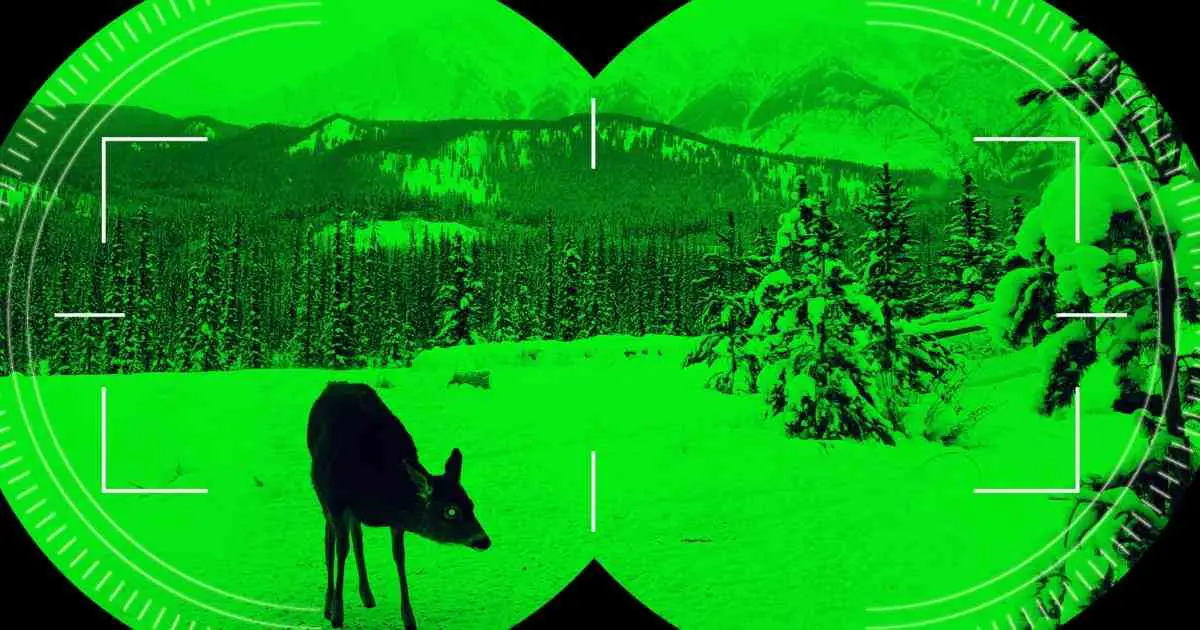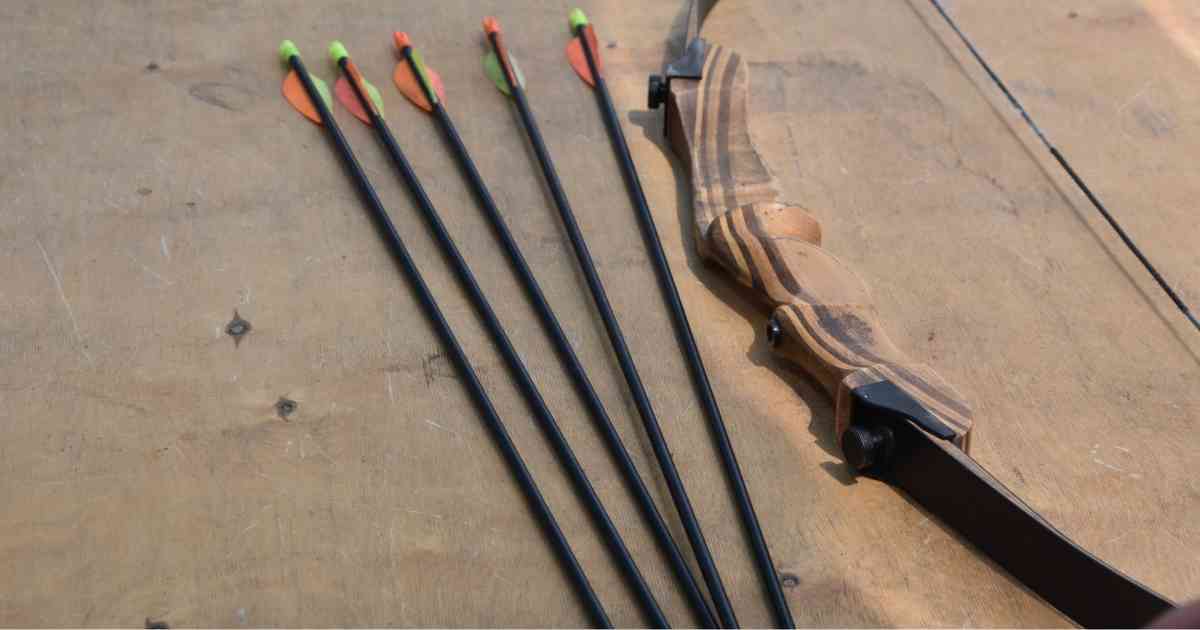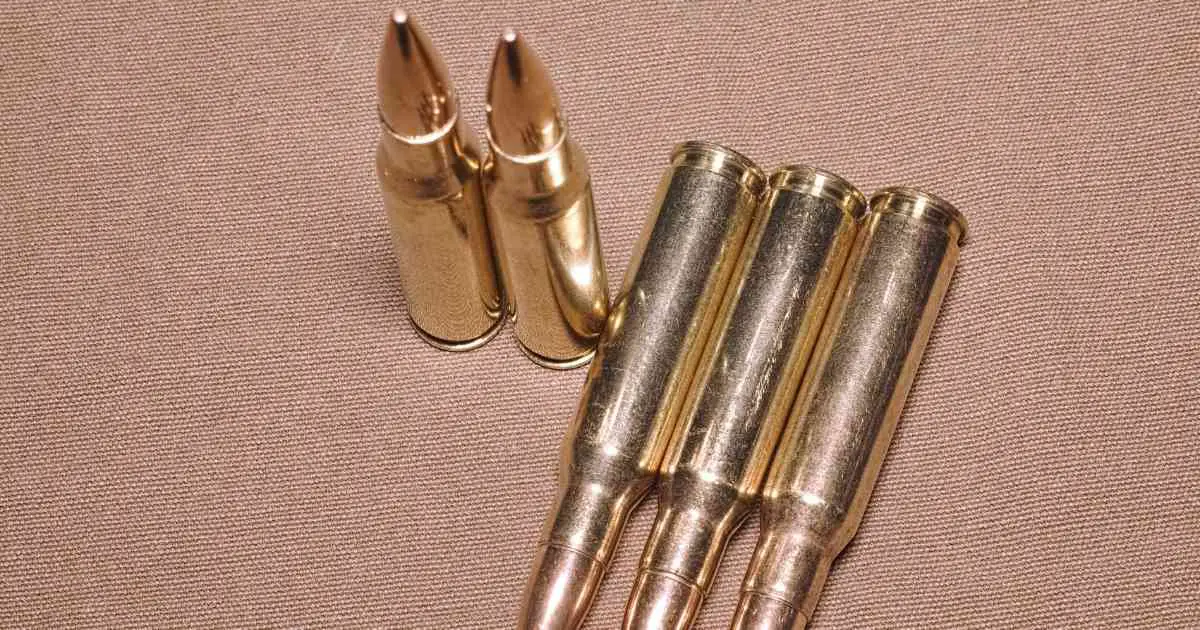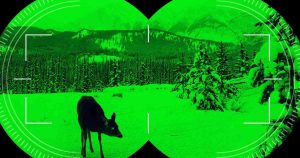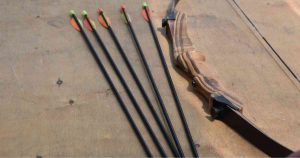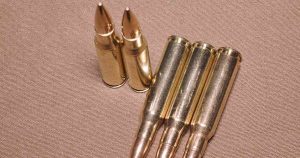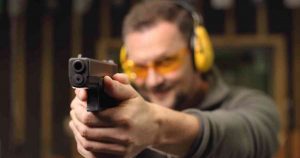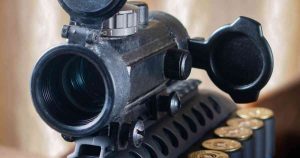Hunting knives are designed to facilitate specialized tasks such as skinning and dressing of game. Great knives will enable you to neatly separate the hide from the carcass and carve out precise cuts of meat. The blade is the most important part of the knife, and it defines what function the knife will be most adept at.
You should be familiar with the different types of knife blades and their most suited roles before investing in a hunting knife or survival knife to get the most value out of your investment. This guide covers blade type, their features, and applications so that you can optimize your selection.
The most obvious differences between the numerous hunting knife blades are their shapes and sizes, which directly determine the knives’ specialty. To better grasp the difference between knife blade shape, there are terms we shall be using for description that you need to familiarize yourself with:
The Anatomy of a Knife Blade
Let’s have a look at the different parts of the blade and their common names to better understand knife blade shape.
Bolster
This is where the blade joins with the handle. It provides an allowance between the hunter’s hand and the blade as a safety precaution so that the hand does not slip all the way to the blade while cutting. It also contributes extra weight so that the knife is better balanced.
Some knives have fitted a hilt or guard on the handle for extra security, but most hunting knives don’t because they prevent you from working efficiently inside the body of large animals.
Heel
It is the lower edge of the blade next to the bolster and will always be the widest part of the blade. It is used when cutting through tough foods because it is just next to the handle, making it easy to apply pressure.
Spine
This is the non-cutting thick side of the blade. Its thickness gives the entire blade strength; the thicker it is, the stronger your blade will be. It also generally balances the knife when it is being utilized.
Edge
This is the sharpened part of the knife responsible for most of the cutting. The blade’s sharpness relies on how much you grind this part. The length of time it can maintain this sharpness is dependent on the quality of the blade material. Edge retention is definitely an important consideration.
Belly
This refers to the curve of the blade’s edge. Wider knives have a larger belly with a more convex edge, which gives them a longer cutting length than their thinner counterparts. This saves on time while skinning because fewer strokes are required for the same animal with less wrist movement.
Point
It is that part of the hunting knife blade where the edge meets the spine, forming a sharp end that hunters use for tipping and puncturing. Most of the skinning is done using this part as it is usually sharp enough the sever the hide from the flesh.
Tip
This is the front part of the knife’s edge located just below the point. It is used for intricate cutting and chopping.
Bevel
This refers to the angle of the cutting edge of the hunting knife. Most are between 20˚ to 30˚ The sharpening angle mirrors the angle of the bevel and is usually half of it in size. It makes the blade lighter, allowing you to get a sharper primary bevel.
Tang
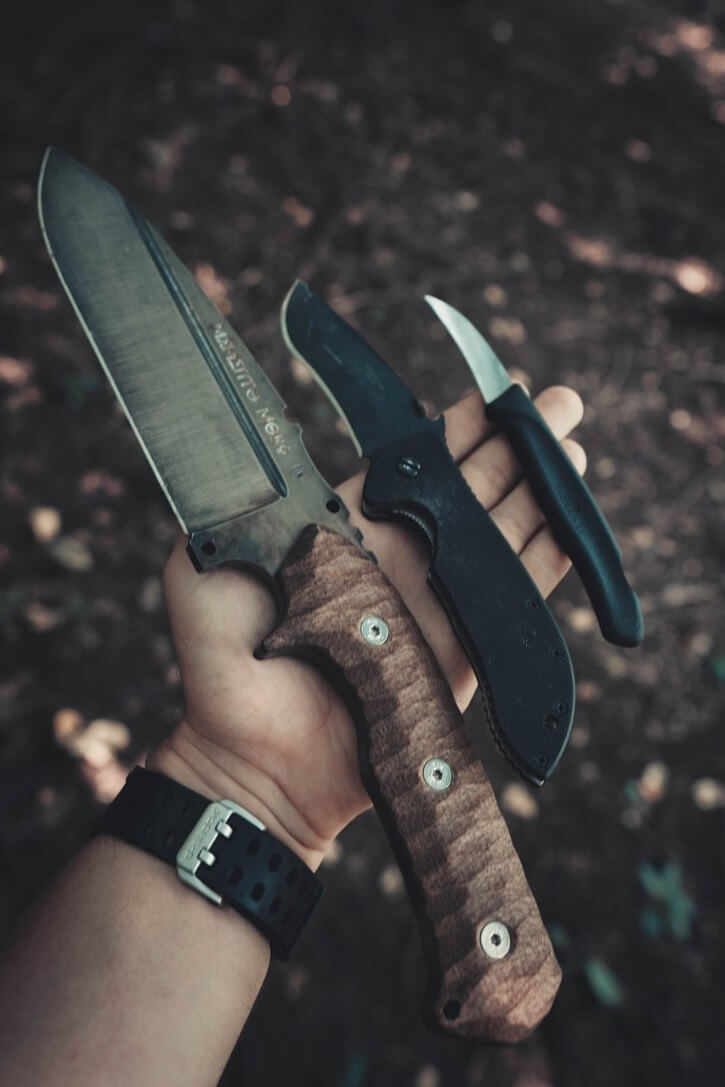
It is the unsharpened bit of the blade which connects it to the handle and is a critical structural component. The most stable knives for hunting have full tang blades, which means the tang runs all the way to the butt of the knife.
It is like the blade continues through the entire length of the handle. In some instances, it actually constitutes part of it. The metal of the full tang inside the handle reinforces the strength of the knife.
Partial tangs have the advantage of making lighter knives but are less stable. A skeletonized tang tries to balance the benefits of both worlds by being a full tang with holes in it, shedding off the extra weight while retaining the sturdiness of a full tang.
The Different Types of Knife Blades for Hunting
There are many combinations of the features we just looked at that make the blades ideal for hunting knives. Some even have special labels as we are about to see.
1. Clip Point Blade

Their name is derived from their shape, which looks like it has been clipped at the upper spine close to the tip. They are thin with an extra sharp point thanks to the clipping, making them ideal for dressing and skinning, especially where precision is required. The upper clipped side often has its own sharp inverse bevel, rendering it an above-average piercer and slicer.
Topping our list is the Old Timer 1520TL Clip Point Skinner with its full tang blade made of high carbon stainless steel. It can pierce through the hide with minimal resistance because of its sharp point and thin shape. It is also the right size for precision skinning and is lightweight enough for a swift dressing session.
2. Drop Point Blades
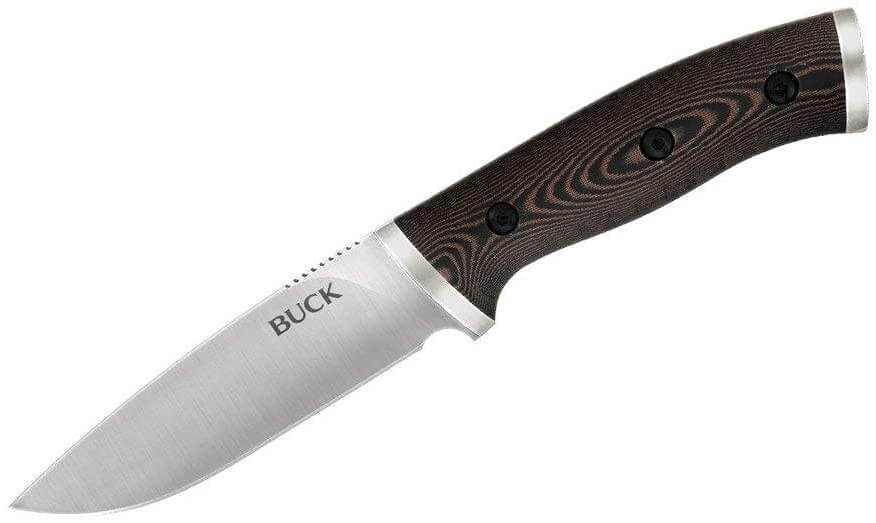
These are characterized by a convex curve of the spine as it ‘drops down’ from the handle towards the blade’s tip. They are thicker than clip-point blades, allowing them to maintain blade density closer to the point, making them stronger.
Their tips are also sharp, so they are also commonly used for skinning and hunting. They have a wider belly which gives them a longer cutting surface than a clip point blade.
Our drop-point illustration is courtesy of one of the most established names in the knife-making industry. Buck Knife’s 0863BRS Selkirk knife spoils you with a ferrocerium fire striker that also functions as a whistle because they know you will finish your dressing on-site using their multipurpose knife.
Its 420HC stainless steel combines corrosion resistance with the ability to retain sharpness gracefully.
Drop point blade and clip point blade design is ideal for skinning game animals with hides loosely attached to the carcass because you only need to use the tip of the knife to slice through the thin membrane, attaching the hide to the rest of the carcass.
3. Trailing Point Blades
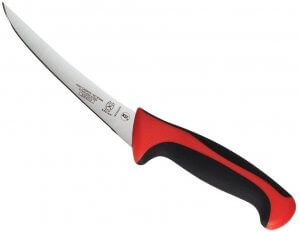 These knives have their spines curving upwards such that their points are elevated above the handle level. Their shape allows for large bellies, meaning enhanced cutting length. You can therefore skin large animals faster with fewer strokes.
These knives have their spines curving upwards such that their points are elevated above the handle level. Their shape allows for large bellies, meaning enhanced cutting length. You can therefore skin large animals faster with fewer strokes.
Mercer’s Culinary Millennia Boning Knife stands out in this category with its high-quality razor-sharp high carbon steel blade. It is full tang and holds sturdy when boning, so you don’t strain your wrist in the process.
4. Gutting Knives

These are used to remove the internal organs of your animal so that the meat can be preserved longer. This process should be done when the body is still warm and fresh because it is much easier to execute. Therefore, the knife should be easy to use so that you can cut the animal open faster.
They often come with gut hooks to simplify the process, although some experienced hunters prefer regular blades. The gut hook is designed to open the animal’s belly before you use the primary blade to proceed with dressing.
Check out Old Timer’s 1580T Gut Hook Skinner with its 3.5” high carbon stainless steel full tang blade. It makes skinning easy with its narrow shape and sharp point and corrosion-resistant and easy to clean.
We also need to look at what is entailed in hunting to single out the features that make certain blades more suitable than others.
5. Skinning Blades
They should separate the skin from the meat easily and neatly. A skinning knife should be short, sharp, and curved in a way that will reduce the amount of wrist movement required to get the job done. Fatigue of the wrist can result in a sloppy job which may damage the skin while producing substandard cuts.
6. Caping Knives
These are used for skinning the head and neck of the animal when you want to use them as a trophy or souvenir. The blades are preferred short and very sharp to maneuver the intricate curves and crevices. Special care is required so that the skin is not nicked.
A double-edged blade with an extra sharp point is great for skinning because it can stab the animal easily without applying too much pressure. This shape reduces the amount of resistance encountered, enabling you to penetrate the skin faster and deeper.
7. Boning Knives
Boning is the next step after skinning which involves the removal of meat from the bones. This knife should have a slim blade to cut close to the bones and get all the meat. It should also be flexible for shock absorption when it strikes a bone.
Hunting with Folding Knife Blades Versus a Fixed Blade
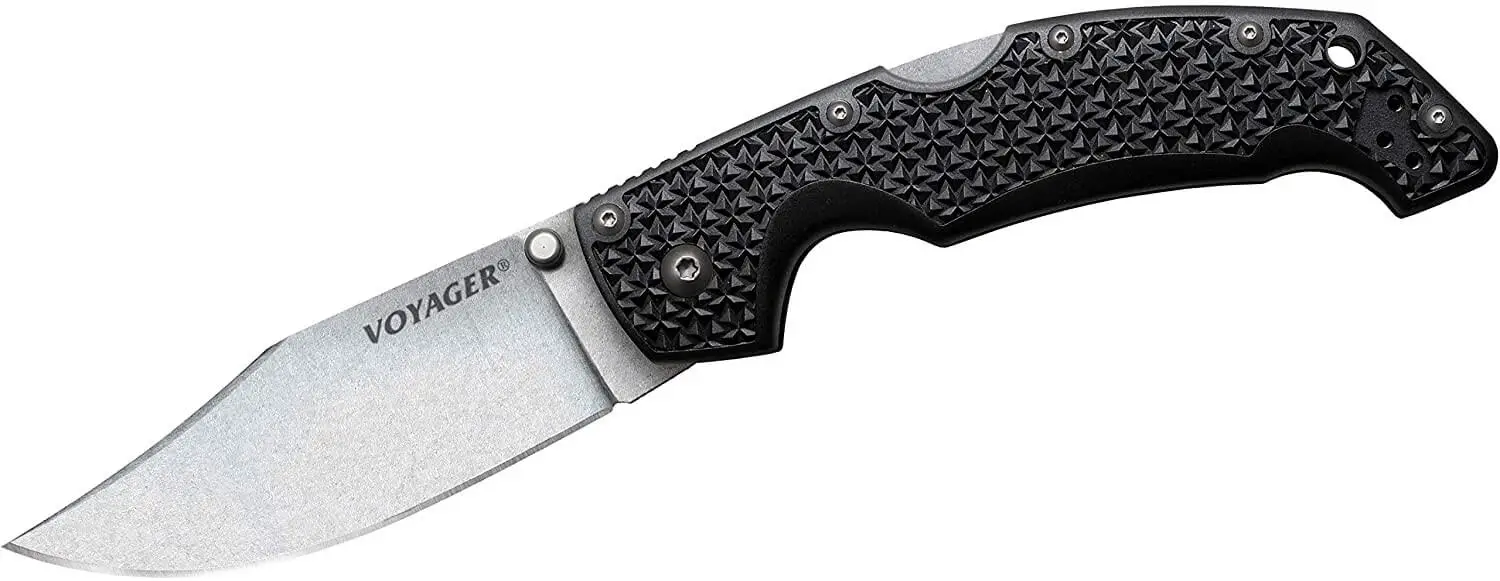
All other considerations held constant, we recommend a fixed blade for hunting over a folding knife blade. The blades are guaranteed to get messy with all the blood, fat, skin, and dirt involved. It requires a lot of effort to clean a folding knife, and you can never be sure you will have the time or the patience to do it after every hunt. Folding blades are also not the most stable because of the folding joint.
There are knives with folding blades which have extra qualities that make them superior to many fixed blades as hunting knives, however.
Cold Steel’s Voyager LG folding knife features their stable Tri-Ad locking system, ensuring it will stay stable like a fixed blade even through tough skin and bone. It also has three layers of stainless steel fused together into a tough workhorse capable of extending the sharpness of the edge beyond a few hunts.
Our Verdict
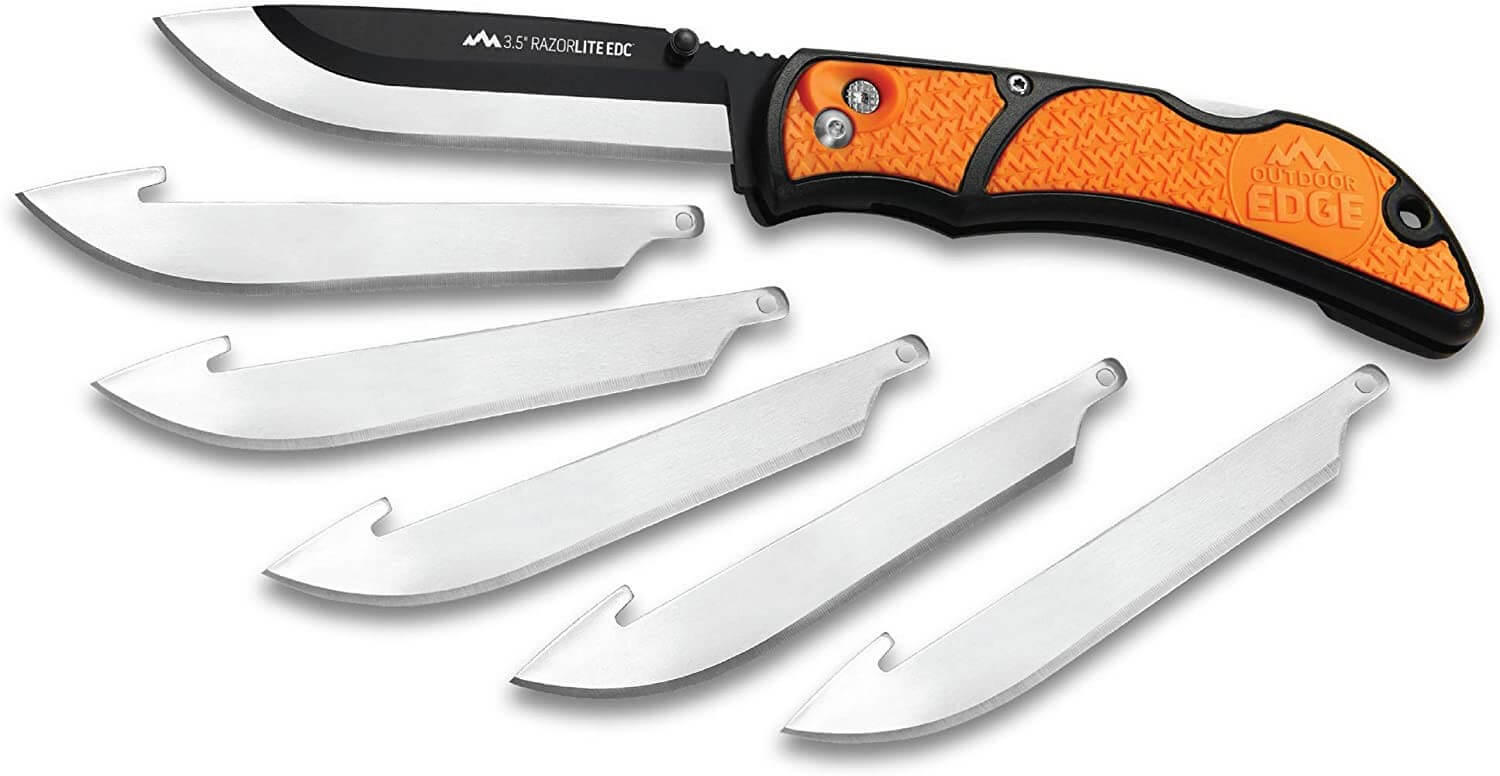
It is impractical to carry a whole set of hunting knives into the field. Your load will be heavy, they will take up space you can use on other essentials, and the clutter will be unmanageable.
Once you have made up your mind on the type of game you are targeting, find the most versatile blade with the most functionalities. You can carry two or three with different features to diversify your options. Some knives have both a curved section for skinning and a straight bit for carving and can be used for both roles. There are quite a number that fit in more than one category.
There is no single product that can claim to be a full hunting knife blade, and the term is often used loosely to refer to blades that were made to be used at different stages of the process. Hunting requires several differently adapted blades for the specific steps involved.
It would be a disservice to conclude this article without mentioning the replaceable blade knives, which enable you to choose the type of blade you require for a specific task and use it on the same knife. These hunting knives come with detachable backup blades, which are compact and easy to carry along.
A great example is the Outdoor Edge RazorLite Replaceable Blade Hunting Knife, an optional Outdoor Edge RazorLite compatible 6 piece combo replacement knife blades pack. The pack has a gutting blade, a drop point blade, and a boning/ fillet blade. These have you covered for all the dressing you need to do on your animal before hauling it home.
This can be a good place to start before you master the tools because you will have an option for all your dressing needs as you get established.
The market is saturated with quality hunting blades if you know what to watch out for. We hope this article has been enlightening and you are now better placed to start your knife collection.


